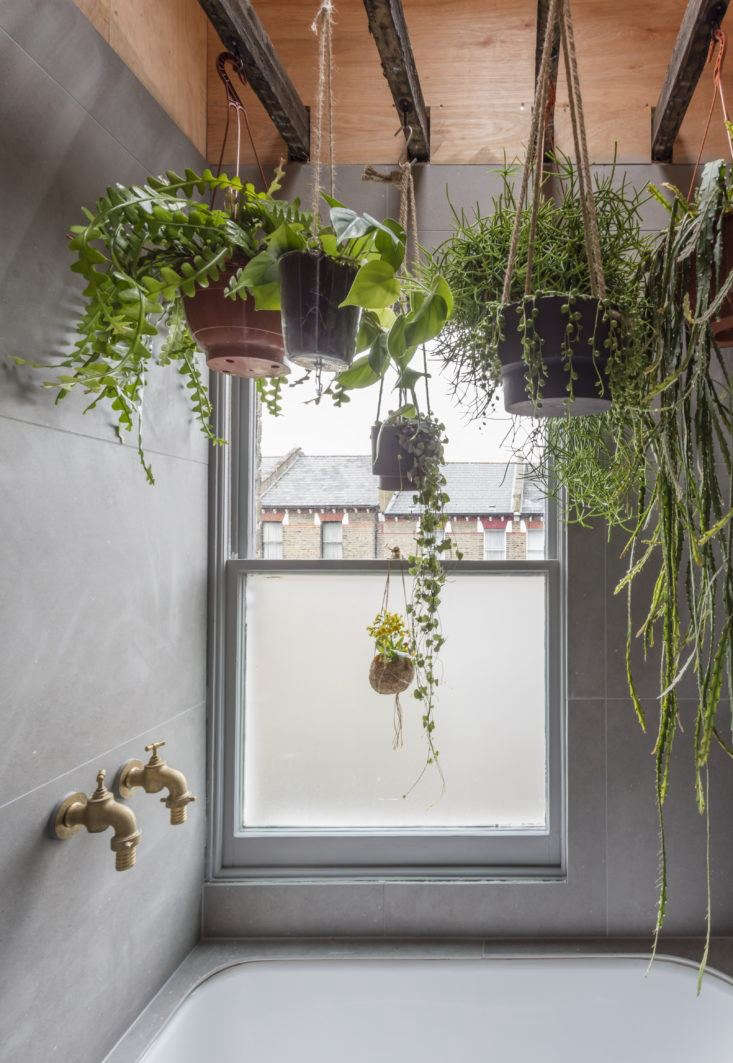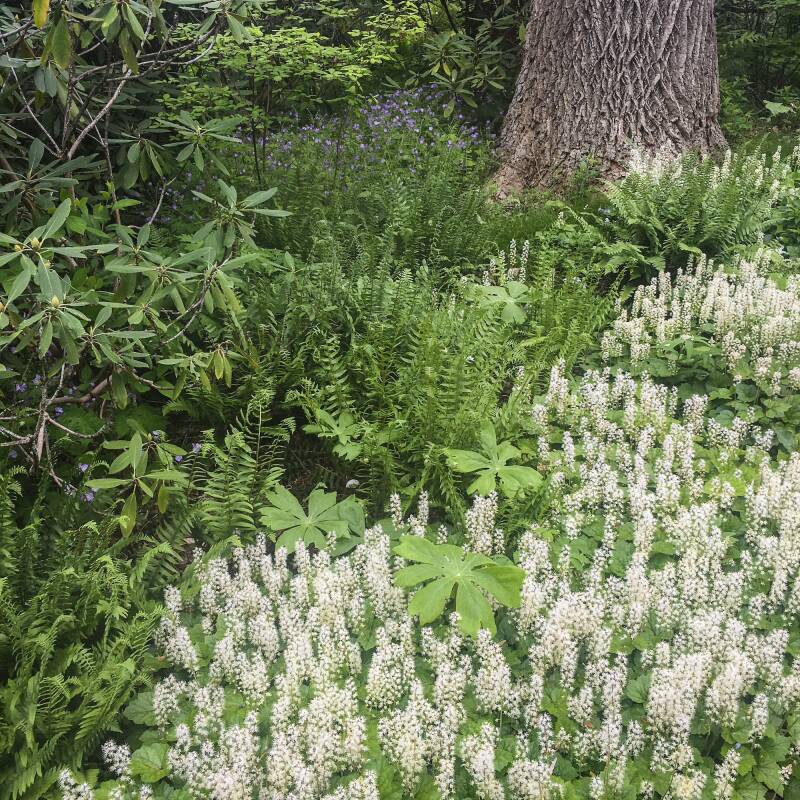Greatest Hits 2022: Each day this week, we’re republishing the most popular posts of the year, in case you missed them the first time around.
Many of us are trying to make smarter, more eco-friendly choices when it comes to our food, health, wealth, and the earth. It’s time to do the same on the houseplant front. But how do we make sure that our love for indoor plants is as positive for the earth as it is for us?
Please keep reading to learn 9 ways to be more sustainable when it comes to your houseplant hobby:
Featured photograph by Jonathan Hökklo, courtesy of Lauren Snyder and Keith Burns, from In Bed-Stuy, Brooklyn, a Renovated Brownstone with Inspired Solutions.
1. Propagate and share.

When you propagate your own houseplants, you aren’t importing plants and adding to the carbon emissions. Some houseplants are super-easy to propagate, and they make more of themselves in no time—which means you can keep the starts or give them away as thoughtful, green gifts. (To learn more on how to propagate, see Houseplants 101: How to Propagate Plants.) You can also join (or organize) a plant-swapping community, a great way to meet like-minded people with whom you can share tips, tricks, and resources. (See The New Sharing Economy, Plant Swap Edition.)
2. Buy secondhand pots.

Consider scouring thrift stores, swap meets, and garage sales to find the perfect secondhand pot. And be creative when it comes to vessels: old tea kettles, tins and vintage containers can all be repurposed as planters. Last, be sure to reuse those un-recyclable black plastic pots for your propagation adventures.
3. Rehabilitate sad plants.

Have the patience to tend to your ailing plant (instead of tossing it into the trash). You don’t need a medical degree to be a plant nurse and bring a sick or injured plant back to health. All it takes is a little research into what your plant requires in terms of light and water needs. Then with time and proper care, you can save a plant from a sad ending. If the plant is truly a lost cause, save it from the landfill and compost it.
4. Shop locally.

We get it. Big-box retailers have more competitive prices. But if you can afford it, try not to trade low prices and convenience for quality and sustainability. Support small businesses, especially those already making sustainable choices. Search out local growers near you and buy direct. Look on their “About Us” page and learn about their practices to see if they use renewable energy, if they capture rainwater, and use non-toxic pest solutions.
5. Reuse water.

Even if you don’t live in an area battling drought conditions, it’s earth-wise to reuse some of your home’s greywater (used water from sinks, tubs, and washing machines) to hydrate houseplants. Consider putting a bucket in your shower to collect the warm-up water. Or put a bowl under your colander to catch the excess when you wash lettuce or fruit. Another idea: collect rainwater in small containers. Pro Tip: Houseplants love rainwater as it contains more oxygen than tap water and is absent of treatment chemicals.
6. Feed them naturally.

Avoid heavily synthetic fertilizers and the un-recyclable plastic containers they come in. Instead, consider adding natural ingredients you may already have on hand—eggshells, Epsom salt, coffee grounds—to inject some nutrients into the soil. If you have a fish tank, consider saving the water from it when you clean out the aquarium and using it to water your houseplants (fish waste contains nitrogen and potassium). Or, forgo fertilizer completely for the less fussy plants and instead, top-dress your pots with fresh soil when the levels naturally drop from soil compaction and soil escaping through the drainage holes.
7. Smaller is better.

When you choose a smaller-sized plant, you’re also choosing less packaging and, in general, a smaller carbon footprint.
8. Resist buying one-and-dones.

Don’t buy novelty houseplants like poinsettias, sprayed cacti, and Hoya hearts, all of which “are designed to die,” botanist and houseplants collector James Wong has cautioned to his 300,000-plus Twitter and Instagram followers. Such plants are made to be disposable.
9. Avoid peat products.
Most potting mixes include peat to help it retain moisture and oxygen. Unfortunately, harvesting peat for commercial use leads to the destruction of carbon-trapping peatlands, which help mitigate the impacts of climate change. (See Just Say No to Peat: It’s Time to Rethink the Compost and Soil You Buy for more on the deleterious effects of peat mining.) Instead, look for peat alternatives when buying potting mix, like options made from coconut coir.
For more on sustainable gardening practices, see:
- Water Wisely: 6 Tips on How to Water Your Garden Without Waste
- 10 Native Alternatives to Invasive Plants
- The Rake vs the Leaf Blower: Which Is Better?
N.B.: This post was first published February 2022.















Have a Question or Comment About This Post?
Join the conversation (0)